Evidence for links between abiotic environmental conditions and WSD outbreaks reviewed: dissolved oxygen, hypercapnia and pH, nitrogenous compounds
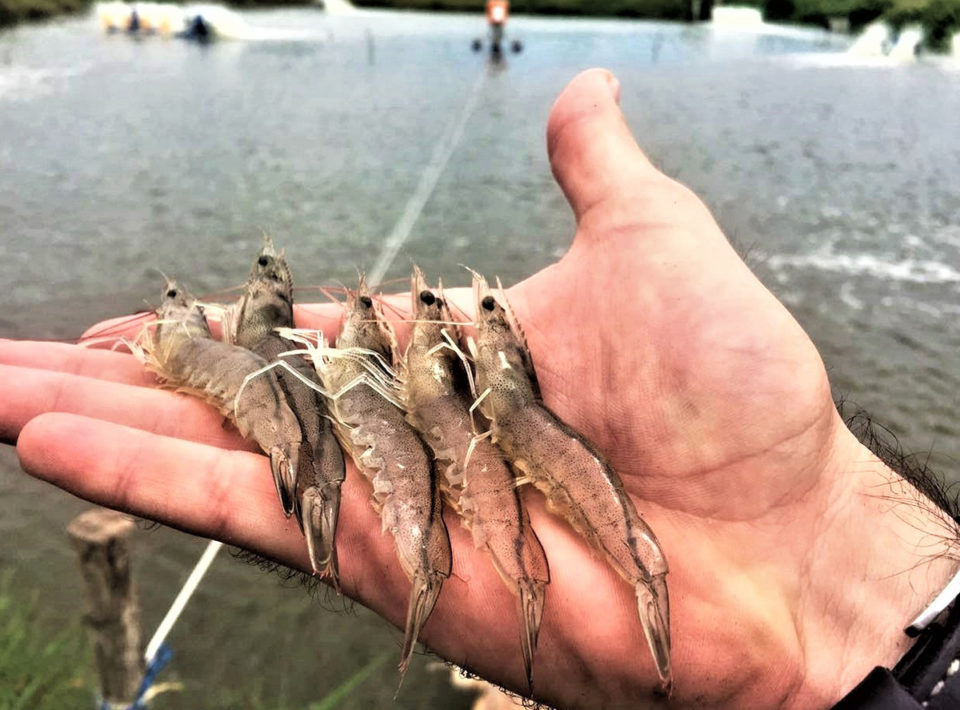
In part 1 of this article, the authors evaluated published literature and discussed research on possible links between temperature and salinity, and WSD disease outbreaks. In part 2, dissolved oxygen, hypercapnia [carbon dioxide concentration increases in aquatic systems] and pH, and nitrogenous compounds are reviewed.
Dissolved oxygen concentrations
Within aquatic systems, dissolved oxygen (DO) concentrations are heterogeneous; fluctuate depending on physical, chemical and biological factors of the surrounding areas; have strong diurnal variations and drop overnight [without supplemental mechanical aeration] due to the continued respiration of aquatic life in the absence of photosynthesis.
Oxygen in the water becomes depleted when demand outweighs in situ production, which and can be driven by human-caused factors including the over-enrichment of the water with nutrients (e.g., phosphorous compounds), usually via surface water runoff from nearby agricultural sites and subsequent eutrophication.
The resulting hypoxic [oxygen deprived] conditions in the ponds can affect the cultured shrimp and also result in local degradation of water quality in surrounding areas through water exchange. Reported in situ pond measurements of DO concentration generally show DO levels ranging from 2.9 to 5.0 mg per liter. DO concentrations are significantly reduced following heavy rainfall.
https://www.aquaculturealliance.org/advocate/influence-of-stressors-on-shrimp-susceptibility-to-white-spot-disease-part-1/
Oxygen regulation in penaeids
Penaeid shrimp are able to actively maintain their internal oxygen concentration independently of environmental oxygen partial pressure, up to a critical threshold. At or below this threshold, oxygen consumption becomes the limiting factor for metabolic rate. During short-term exposure to hypoxia [when the body or a region of the body is deprived of adequate oxygen supply at the tissue level], shrimp exhibit erratic behavior and increase swimming to avoid unfavorable conditions. Conversely, during prolonged exposure to reduced environmental oxygen below the threshold, penaeid shrimp reduce their movement and lower their metabolic rate and oxygen consumption.
Prolonged absence of sufficient DO also leads to an increase in anaerobic [in the absence of free oxygen] metabolism, in order to maintain survival. And during short-term exposures to hypoxia, shrimp can also display avoidance behavior, characterized by an increase in swimming and erratic movement to move away from areas with unfavorable conditions. The expression of some genes and increased viral loads have been shown to be affected by hypoxia during WSSV infection.
DO concentrations and disease outbreaks
DO concentrations should be maintained above 3.0 mg per liter in semi-intensive aquaculture production systems to sustain shrimp culture and should be at least 5.0 mg/L in intensive systems. However, these values are less than or equal to the critical oxygen tension, PCRIT (the oxygen partial pressure below which an animal’s oxygen consumption rate becomes dependent on this partial pressure) of L. vannamei, which is 5.0 mg per liter (at 28 degrees-C). DO concentrations at which shrimp mortalities are reported as low as 1.2 mg per liter.
Hypoxia may increase susceptibility to WSD: modelling of pond data from infected farms in Mexico has suggested that DO plays an important role in determining the severity of mortality events, with higher aeration earlier in the culture period resulting in reduced shrimp mortalities in small ponds. Hypoxia has been shown to increase susceptibility of shrimp to bacterial infections including Vibrio alginolyticus and other pathogens. Low oxygen in ponds and high carbon dioxide, both stressors to shrimp, can often be linked.
Implications for DO management on farms
Maintaining DO is important to reduce the occurrence and/or minimize the impacts of disease outbreaks. Monitoring of pond DO concentrations is of interest to farmers, because under hypoxic conditions feed consumption and growth rates decrease and penaeid shrimp likely have increased susceptibility to diseases.
The minimum required aeration within ponds will depend on the PCRIT, density, biomass and age of the species being cultured and the phytoplankton/microbe community within the pond, including in biofloc systems. To maximize economic return from mechanical aeration, diurnal patterns in DO concentrations must be monitored and understood. In ponds containing photosynthetic organisms, aeration may not be required during daylight hours when peak photosynthetic activity provides supersaturation of ponds. The relationship between DO concentrations, paddlewheel aeration and shrimp feeding rates are known and are a powerful tool to determine aeration requirements based on maximum daily feed amounts and shrimp stocking densities and biomass.
Hypercapnia and pH
Hypercapnia, which is the elevation of carbon dioxide (CO2) concentrations in aquatic systems, occurs as a result of biological activity. Peak concentrations usually occur overnight in aquaculture ponds when photosynthetic organisms cease carbon fixation due to lack of light or following feeding when respiratory activity is very high. Hypercapnia results in acidification of pond water and directly impacts the physiology of the organisms in the pond. pH is monitored extensively in shrimp aquaculture and manipulated and adjusted through the addition of various alkaline compounds like sodium or calcium carbonate and hydroxide to maintain pond water within an ideal pH range from 7.8 to 8.3.
pH regulation in penaeids
Decapod crustaceans buffer their body fluids against pH changes in the environment by altering the exchange of ions at the gills, by altering bicarbonate concentration in their hemolymph, and by mobilizing mineral carbonates of their exoskeleton. Each of these mechanisms is energetically expensive, with costs traded off against growth and other biological processes. Shrimp mortality is increased at both high (>8.5) and low (<6.0) pH stress. Research has shown that L. vannamei exhibits a strong adaptive ability during gradual pH decrease (to 6.65) defined by a stabilizing cumulative mortality (up to 6.67 percent), length and weight gain percentage. In contrast, gradual pH increase (to 9.81) resulted in steadily increasing mortalities (up to 39.9 percent) and continual decreases in length and weight gains.
However, rapid decreases in pH may negatively impact the ability of shrimp to regulate hemolymph pH effectively. In sediment dwelling organisms like penaeid shrimp, hemolymph osmotic pressure [pressure required to stop water from diffusing through a barrier by osmosis (the spontaneous net movement of solvent molecules through a selectively permeable membrane into a region of higher concentration)] is significantly reduced when sediment pH is lowered from 7.0 to 6.5, and results in slowed penaeid growth either through decreased molting frequency, a reduced size increment during molting, or a combination of the two. Under reduced pH conditions, ions required for shrimp shell (carapace) formation are depleted, altering carapace thickness, hardness and structure. Reduced carapace calcification at low pH or reduced environmental levels of bicarbonate may therefore affect or impede the ability of crustaceans to form this protective layer in certain culture conditions, and also increase the shrimp mortality through cannibalism.
pH and disease outbreaks
Laboratory studies suggest that variations in carbon dioxide and pH increase the risk of infection in shrimp by opportunistic pathogens such as V. parahaemolyticus, V. alginolyticus and Lactococcus garvieae. Researchers have reported that pH had a lower impact on WSSV proliferation in shrimp compared to temperature and salinity. Optimum virus replication occurred at pH 8.0 and was restrained at both high (8.5 and 9.0) and low (6.5 and 7.5) pH values. This is in contrast with data generated by monitoring pond conditions which inferred that high pH may be associated with WSSV outbreaks when in combination with low temperatures, consistent with earlier predictions that high pH may be associated with mass mortalities.
The discrepancy between these results is most likely due to variation in study design and monitoring methods used, with one study altering pH alongside temperature and salinity within tanks and the other using field data to infer correlations between conditions and outbreak events in ponds. Recently, researchers demonstrated increased cumulative mortality in WSSV-injected L. vannamei following exposure to basic pH (pH 8 and pH 10) stress. In order to determine the individual impacts of pH and of carbon dioxide on the WSD status of ponds, further studies are needed to examine their impact, each in isolation, before considering their interactions and impacts in combination with other factors in environmentally realistic scenarios.
Implications for pH management in farms
Throughout the culture period, increasing shrimp biomass drives carbon dioxide production, and subsequent pond acidification. Maintenance of optimal pH (target 7.8 to 8.3) in shrimp ponds is achieved by the addition of alkaline compounds. Some of these replenish ions required for carapace formation following molts and others may enhance their depletion via calcium carbonate precipitation.
Data available suggests that deviations in pH from an optimal range results in increased occurrence of WSD outbreaks. Elevated pH increases ammonia toxicity and prolonged exposure can result in excessive calcium deposition in pockets beneath the shrimp shell (exoskeleton), leading to misdiagnosis of WSD in shrimp farms. Therefore, pH should be managed to minimize ammonia toxicity, prevent unnecessary emergency harvests and ensure fast and efficient carapace formation to minimize losses by cannibalism.
Critically, farmers must also consider the wider implications of elevated carbon dioxide levels, as well as the impacts of changes in other minerals within the water, which are presently not considered and therefore may be overlooked with respect to WSD outbreaks.
Nitrogenous compounds
Within pond ecosystems (particularly those that are fully enclosed), ammonia (NH3), nitrite (NO2–) and nitrate (NO3–) concentrations often exceed naturally occurring levels due to the degradation of excess feed and metabolic wastes excreted by culture animals. In general, the toxicity of ammonia, nitrite and nitrate in crustaceans varies depending on developmental stage, with greater potency and often the largest differences in tolerance reported during larval and juvenile stages. Elevated concentrations of these compounds have similar physiological impacts on penaeid shrimp, including reduced feed intake, slowed development, significantly reduced growth rates despite increased molt frequency, and damage to the gills including fouling, loss of structure and loss of function.
Increases in temperature and pH are also critically linked to increasing ammonia toxicity in aquatic systems, and oxygen consumption in ammonia-exposed penaeids is significantly higher than controls. Exposure to nitrogenous stress results in immunological responses in some crustaceans including reductions in THC due to oxidative damage and apoptosis [programmed cell death], and significant changes in the expression of many genes that are thought to play a role in apoptosis and immune function. These alterations indicate a compromised immune response, which may in turn indicate an increased susceptibility to infections.
Nitrogenous compounds and disease outbreak
Research has shown that exposing penaeids to ammonia stress during WSSV challenge, total ammonia nitrogen (TAN) concentrations of 0.34 to 14 mg per liter resulted in no significant differences in cumulative mortality or viral replication. In contrast, acclimation of black tiger shrimp, Penaeus monodon, to 1.1 to 8.1 mg per liter TAN for 10 days prior to WSSV challenge resulted in significantly higher viral loads in the hemolymph, gills and walking appendages of infected shrimp, which were maximum loads at the highest ammonia concentration (8.1 mg per liter). These results suggest that prolonged exposure to nitrogenous compounds that might occur in shrimp ponds increases susceptibility to WSSV infection and was recently confirmed experimentally by various researchers.
The severity of bacterial infections has been shown to increase in the presence of high ammonia concentrations. For example, at increased ammonia concentrations, researchers showed that giant freshwater prawns, Macrobrachium rosenbergii, susceptibility to L. garvieae infection increased due to decreased phagocytic activity and resulting lower bacterial clearance, and L. vannamei mortality increased following V. alginolyticus infection due to decreases in phagocytic activity. Similarly, in the presence of nitrites there is an increased susceptibility to bacterial infection.
The effects of chronic exposure to sublethal nitrogen concentrations and to elevated nitrite and nitrate concentrations on WSD in shrimp is important and research is needed. However, as these compounds have been shown to impact the immune responses of euryhaline crustaceans, they have the potential to cause significant losses if not managed appropriately.
Nitrogen accumulation can be limited by stocking ponds at carrying capacity, supplying only the required amount of feed, and by the periodic removal of excess settleable solids from pond bottoms. The latter is aided by the relatively recent development and use in the shrimp farming industry of a central sloped well at the pond bottom known as a “shrimp toilet” to collect and remove excess waste. Rapid waste removal has been shown to be very beneficial in the reduction of Acute Hepatopancreatic Necrosis Disease (AHPND)-causing V. parahaemolyticus in ponds, and so may also be applicable in the management of other diseases of shrimp.
Perspectives
An extensive review of the literature shows environmental factors as influencers of the susceptibility of shrimp to WSD. The available data are mostly on studies focused on temperature and salinity, and for these factors evidence suggests that the rate of change, shrimp age and infection stage during exposure (e.g., to increased temperatures) may dictate differences in susceptibility.
Nevertheless, many critical research questions remain and are summarized in Fig. 2. They include the need for further research on the less studied abiotic factors – such as salinity, hypoxia, hypercapnia and nitrogenous compounds – and crucially, the effects of combined changes in abiotic and biotic environmental conditions on disease outbreak. This is particularly important when considering that environmental stressors rarely occur in isolation and organisms in farm settings are likely to be exposed to multiple biotic and abiotic stressors simultaneously and in a fluctuating manner over time.
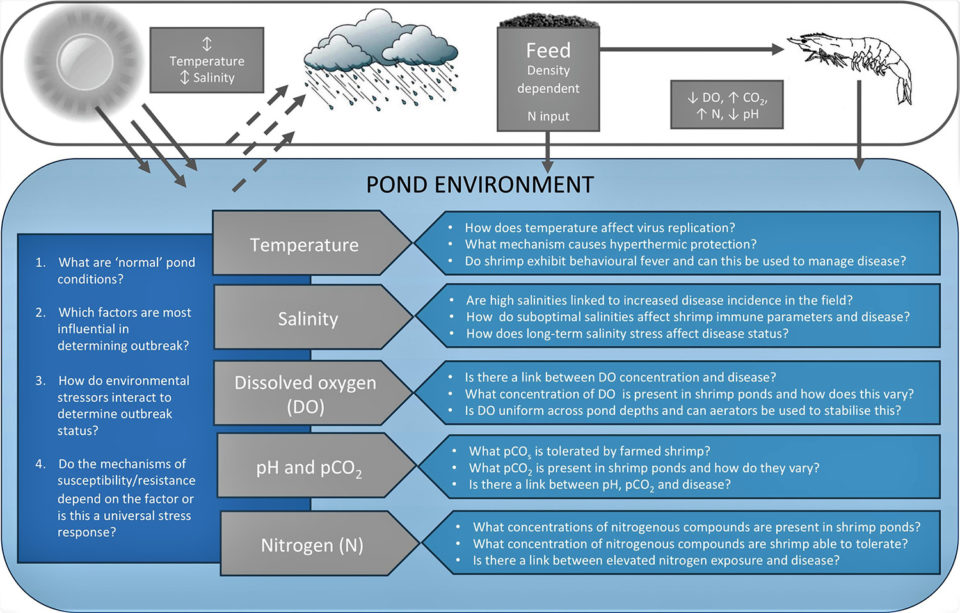
Movement towards fully enclosed production systems offer the benefit of stricter control over environmental conditions, but their implementation is expensive and present specific challenges for the management of water chemistry. In addition, the findings of this review are of increasing importance in the face of climate change, as the occurrence of extreme weather events that result in rapid changes in environmental conditions are predicted to increase in frequency. Resulting changes to environmental factors such as salinity and temperature have the ability to alter the severity of disease outbreaks in shrimp ponds if not carefully managed. These effects could be greatest for (vulnerable) small-scale farmers in developing regions who are less able to control pond conditions.
Continued research toward effective disease treatments for WSD, together with improving disease resistance of shrimp stocks by genetic selection, should remain a priority. However, this needs to occur in parallel with improved understanding and management of combined environmental conditions to relieve WSD and other disease-related losses and to promote sustainable shrimp aquaculture.
Now that you've reached the end of the article ...
… please consider supporting GSA’s mission to advance responsible seafood practices through education, advocacy and third-party assurances. The Advocate aims to document the evolution of responsible seafood practices and share the expansive knowledge of our vast network of contributors.
By becoming a Global Seafood Alliance member, you’re ensuring that all of the pre-competitive work we do through member benefits, resources and events can continue. Individual membership costs just $50 a year.
Not a GSA member? Join us.
Authors
-
Rebecca S. Millard
Corresponding author and Ph.D. student
Biosciences, College of Life and Environmental Sciences
University of Exeter
Stocker Road, Exeter EX4 4QD, United Kingdom -
Robert P. Ellis, Ph.D.
Biosciences, College of Life and Environmental Sciences
University of Exeter
Stocker Road, Exeter EX4 4QD, United Kingdom -
Kelly S. Bateman, Ph.D.
Centre for Sustainable Aquaculture Futures
University of Exeter
Stocker Road, Exeter EX4 4QD, United Kingdom -
Lisa K. Bickley, Ph.D.
Biosciences, College of Life and Environmental Sciences
University of Exeter
Stocker Road, Exeter EX4 4QD, United Kingdom -
Charles R. Tyler, Ph.D.
Biosciences, College of Life and Environmental Sciences
University of Exeter
Stocker Road, Exeter EX4 4QD, United Kingdom -
Ronny van Aerle, Ph.D.
Centre for Sustainable Aquaculture Futures
University of Exeter
Stocker Road, Exeter EX4 4QD, United Kingdom -
Eduarda M. Santos, Ph.D.
Biosciences, College of Life and Environmental Sciences
University of Exeter
Stocker Road, Exeter EX4 4QD, United Kingdom
Tagged With
Related Posts
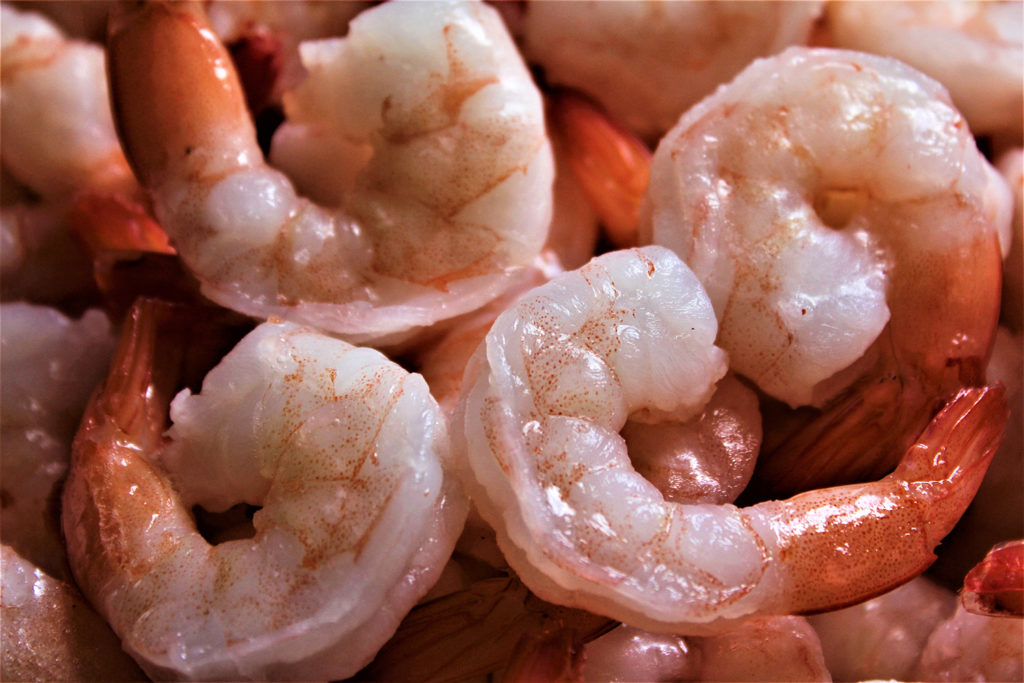
Health & Welfare
Assessment of transmission risk in cooked, WSSV-infected shrimp
Exported cooked shrimp infected with White Spot Syndrome Virus (WSSV) and tested positive by PCR is considered a risk factor for the introduction of the pathogen.
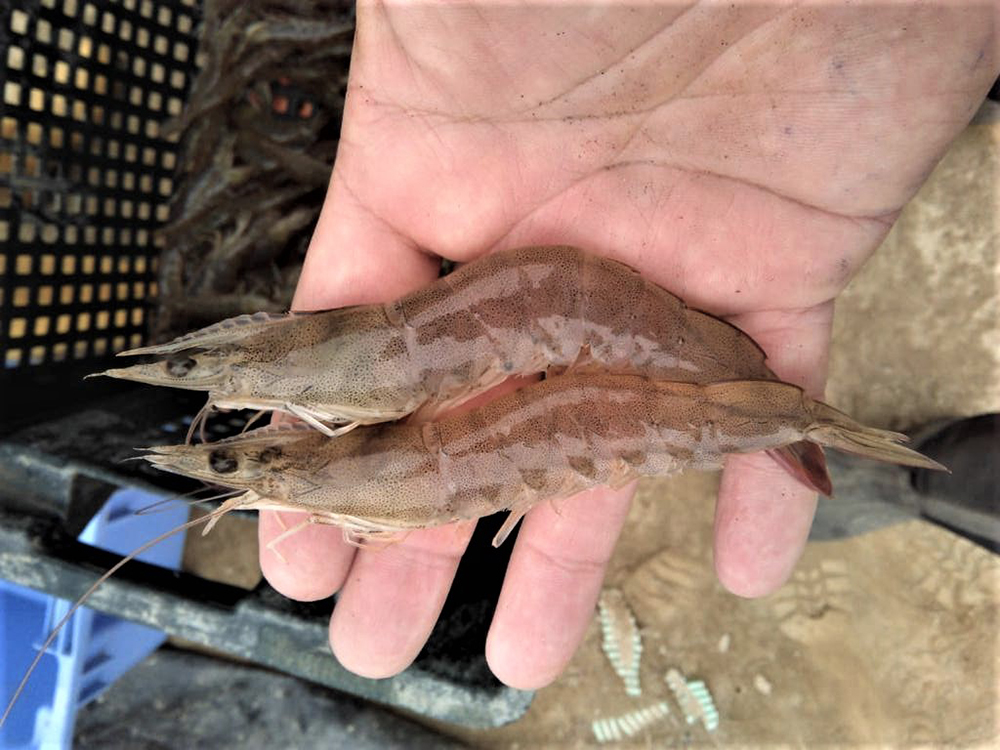
Health & Welfare
Electrochemical detection of WSSV with disposable electrode
Authors demonstrate the detection of White Spot Syndrome Virus – a serious pathogen of cultured shrimp – by a nanofabricated sensing disposable electrode.
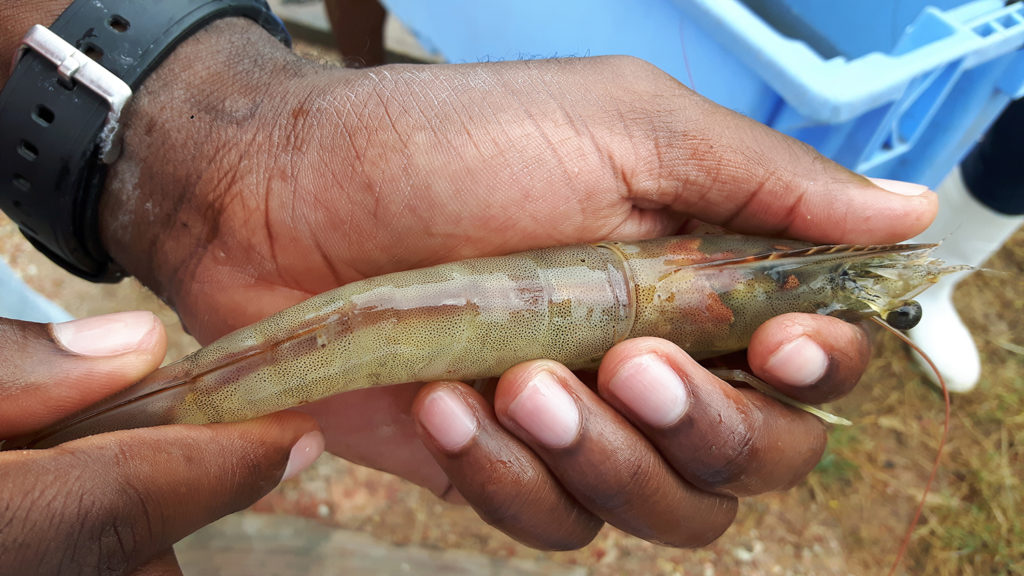
Health & Welfare
Quality, survival of L. vannamei offspring from ablated, non-ablated females
Evaluating the quality and survival of Pacific white shrimp postlarvae from non-ablated female broodstock, a holistic biosecurity and management strategy.
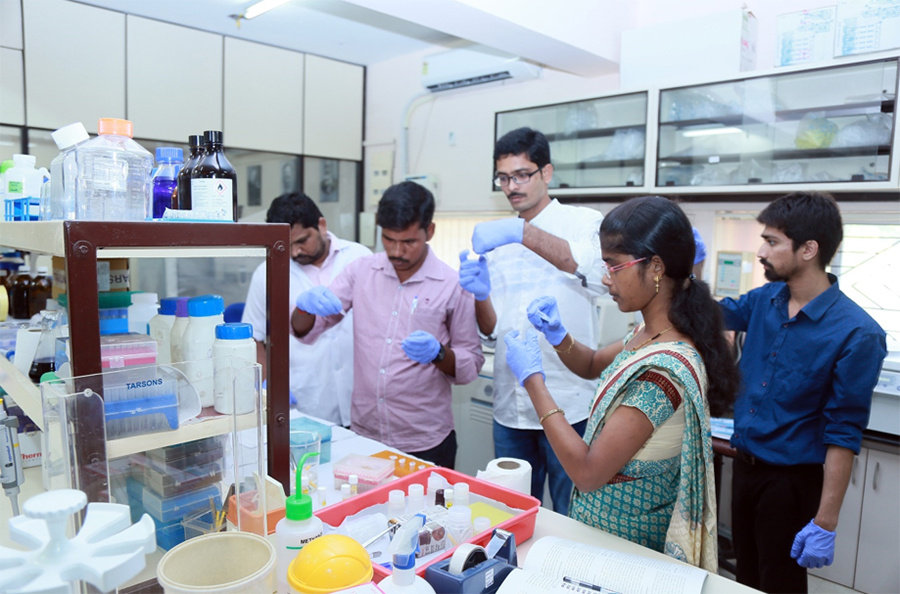
Health & Welfare
Training and harmonization of PCR diagnosis of WSSV in India
Accurate PCR testing of shrimp seedstock assures shrimp farmers that their seedstock is clean of major diseases. Ring tests verify that labs conducting PCR testing are obtaining correct, reliable and reproducible results when testing for specific shrimp diseases.


